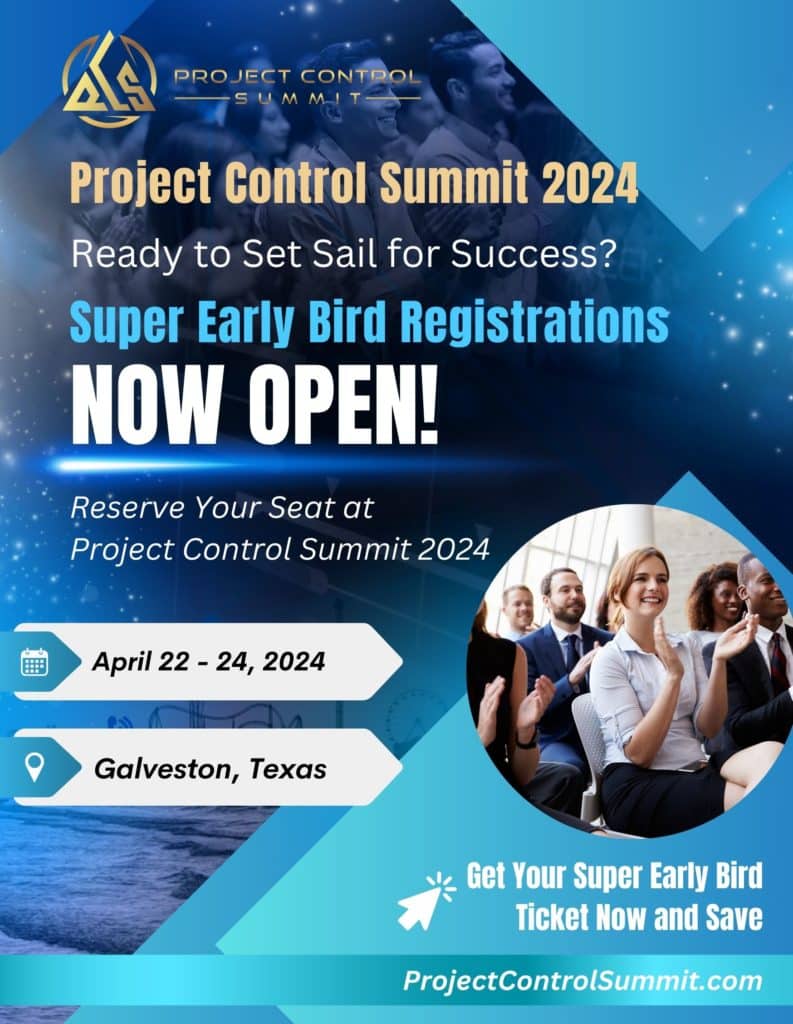Developing a project schedule with a group of engineers can be a challenging process.
There is a parable about eight blind men, who are trying to describe an elephant by touching the part of the elephant that is nearest them.
One man touches the trunk and says, “a snake!”. Another man touches an ear and questions, “a banana leaf?”. One touches a leg and confidently asserts: “a tree trunk”. A final man grasps the tail and says that an elephant is very like a rope.
Each person correctly describes the part of the elephant that they are experiencing, but they are not fully explaining what an elephant actually is.
This parable illustrates the issues that specialist engineering disciplines can have in describing the engineering design activities of a project to a project planner. It’s very easy for them to underestimate or totally overlook activities and interconnections with other engineering disciplines on the project.
When I develop schedules with a group of engineers, I often think about this parable. In this article, I would like to go through some ideas that I have found useful in developing a project schedule with engineers.
1. The Nature Of The Engineering Process
The objective of the engineering design process is to take a conceptual requirement and bring it to the point where it can be constructed. In the design stage of the project, it’s a lot cheaper to make changes on paper than in the construction stage where changes can be extremely expensive. As a result, engineering design is not always smooth and predictable. It’s hard to forecast exactly what the sequence of activities will be. This does not mean that you can not plan design work, it just means that it’s quite likely to change as the work gets done. Rather than being bad planning, it is the nature of the design process.
An example here would be the mechanical drafting 3D model. The pipe routing and layout of the valve locations can undergo hundreds of tweaks during detailed engineering. However, when construction starts any changes to the location of the pipe will be very expensive and potentially have huge impacts on other parts of the project.
As an engineering project progresses there should be fewer and fewer design changes. A good project planner anticipates this process; they understand the design changes through communication with the design team and clearly reflect the impacts of those changes into the project plan. The ability to flexibly adapt to change and communicate with the engineering team is the single most important skill for a successful project planner.
2. Focus On The Broader Benefits Of A Project Schedule
“In preparing for battle I have always found that plans are useless, but planning is indispensable.”- President Dwight D. Eisenhower
It is easy to forget the benefits that a project schedule brings to a project. Engineers often make jokes about how the plan will be wrong and about how planning at this stage is a complete waste of time. Scott Berkun, the author of the best selling project management book Making Things Happen, the Art of Project Management makes the point that even if the schedule dates are unlikely to be achieved, schedules have the following benefits:
- Schedules encourage commitments
- Schedules inspire people to feel part of a whole
- Schedules break abstractions into chunks
- Schedules make work trackable
Obviously, for a project planner, developing a project schedule is a technical exercise that involves software, excel spreadsheets, and negotiation around budget and time commitments. Focusing on the broader benefits that Scott lists will help you to connect with the project team and develop a project control process that will work over the life of the project.
3. Take The Time To Understand The Challenges That Each Engineering Discipline Faces
I have found the most important thing that I could do on a project was to take the time to understand what each engineering discipline is actually doing. The unique challenges that each discipline group faces will have the biggest impact on how that discipline plans its work.
Electrical engineers for example, generally do most of their design work when the load requirements of the project’s equipment have been determined. Then they issue purchase orders for the electrical equipment. After this, they generally need to receive vendor data back from a range of vendors before they can finalize their final project deliverable. Understanding these basic constraints is very useful in working with electrical engineers to build and maintain a realistic schedule. It is not that easy for them to tell you how much time they need and when they will be finished.
The easiest way to engage engineering disciplines is to take a detailed interest in what the project is designing and constructing. One challenge for project planners is that they often feel that they need to know everything about a project in order to be a good planner.
I have found that having just enough knowledge to engage with an engineering discipline helps give you more credibility. This credibility is key to being an effective project planner. By having a small bit of information, I can engage with the discipline and learn a bit more. I learn a little bit, and the engineer is more inclined to engage and take ownership of the project plan.
The best book about what each engineering discipline does in the oil and gas engineering process is the Oil and Gas Engineering Guide by Herve Baron. Herve has a YouTube channel that covers each chapter of the book, which can be found here.
4. Take The Time To Communicate The Project Schedule To Each Engineering Discipline
It is important to take the time to help each engineering discipline actually understand what the project schedule means to them. Emailing someone a 30-page dense document and expecting them to understand all the implications of the schedule is not effective communication. On a busy project with constant changes, it’s quite easy for the key details to be lost in reports that have too much unfocused detail.
I have found that two techniques are useful in communicating a large project schedule.
The first step is to use the filtering and activity coding structure within P6 to create views of the schedule that refer to activities that are directly under the control of each engineering discipline. This allows them to understand what is expected of them and in what time frame.
The second step is to create a visual overview of the project that illustrates the main stages and handover milestones. To do this, I find the best tool to be Office Timeline. This is a Powerpoint plugin that allows an Excel version of Primavera P6 activities and milestones to be easily imported and automatically updated. I keep the key activities, milestones, and dates in an Excel file. I update my office timeline-based file every time the project’s baseline changes significantly.
5. Recognize The Human Element In Projects
It is easy to get carried away with using Excel and scheduling software such as Primavera P6. There are many details that need to be organized, and it usually needs to get done in a short time-frame. The main thing to remember is that you are coordinating the details between groups of specialists that all see the project scope slightly differently. Your ability to connect with and understand what each person needs to do will allow you to create a more accurate schedule and create the buy-in that is needed to manage the inevitable change that will take place over the life of the project.
Being able to create and maintain project schedules that connect engineering design to construction is a high-value project control skill. By taking the time to understand each engineering discipline’s specific challenges and then making sure that the project schedule is understandable to each person, you can really develop in your career as a project planner.
Interested in learning how to develop a robust schedule?
About the Author, Mannix Carney
Mannix Carney is a project planner based in Calgary, Canada, with over 15 years of experience in planning in the oil, gas, and pharmaceutical industries. He writes about his personal learnings over at ProjectPlanningHq.com.





















